#able to convey what they need to. because storyboards are what get cut and edited before moving on to the actual animation.
Text
like idk man i respect that storyboard artist but i think they need to like. do indie projects or some shit like my guy if you want to do the animation and the storyboards just. hm. like. idk i know absolutely no one who follows me knows what the hell im talking about when it comes to twitter animation discourse but like yea idk like. sometimes you gotta be a team player
#lucky.pdf#the primary issue is that storyboards do not need to be that well defined. they are meant to be as low effort as possible while still being#able to convey what they need to. because storyboards are what get cut and edited before moving on to the actual animation.#so that they don't end up wasting time and effort animating scenes that end up being cut. and like they will ultimately end up doing that#bc that's jut how it works. but starting the editing process with the story cuts down on that
3 notes
·
View notes
Text
INTERVIEW: Dr. STONE Director - Shinya Iino
Dr. STONE was one of the most exciting new anime of 2019 and we’re right in the middle of the series’ second season! We were lucky enough to interview series director Shinya Iino and talk about how his team have adjusted to COVID, conducting his own science experiments, and what exactly it means to be the director of an anime series.
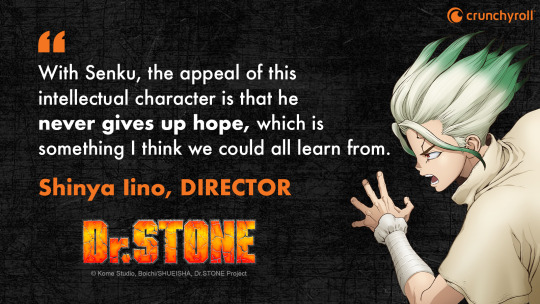
Crunchyroll: What is a day in the life of an anime director like? Is there anything you'd like people to know about it?
Shinya Iino: Well, as far as a day in the life of an anime director goes, the director’s job primarily consists of drawing storyboards, which is what I would say takes up the majority of the time. Other than that, the job involves checking on individual episodes, checking on things like layouts. Then there’s reviewing early footage, and, depending on the day, there’s editing or recording. I feels like you touch a few different episodes every day. I’m not sure what else would be interesting to fans… What kinds of things might they be interested in hearing about?
Well, is there anything that people seem to assume that directors do, but in reality isn't the case?
That's a good question... Being a director is seen as being a pretty lofty position where you get to order everyone around. While that’s not totally untrue, there’s a lot of support involved where you pitch in to help the other staff when they need it.
So it’s almost like you’re being creative, administrative, and even a bit like an HR department, making sure everyone is happy.
I think so. The storyboarding process is probably the most purely creative task. On an episode-to-episode basis, there’s a bit of an oversight aspect to it–I guess you could call it management–where you help with the fine tuning.
What got you the most excited to return to this world and to these characters?
Well, as far as the second season goes, you get to meet a lot of the characters from the Tsukasa Empire. They’ve already been announced, and three of them are going to be regular additions to the cast. I was really looking forward to getting to draw them. Other than that–and this is almost like unfinished business from Season 1–there’s the conclusion to the conflict with Tsukasa. Getting to depict how his arc comes to a close was something I was happy about. I really wanted to make sure I finished it out. Tsukasa’s depiction, in general, is one of the things I really enjoy about this series and put a lot of effort into.

The first season of Dr. STONE was your directorial debut. I wanted to know how you feel you’ve grown as a director since starting out.
Good question! How I’ve grown as a director… hmm, I wonder. Well, one funny thing is that I don’t oversleep as much anymore! I’ve managed to make it to meetings on time and I’ve been a bit more responsible in general. I’m mostly kidding here, though! The way I used to be assigned screenplays and storyboards before directing, I was assigned things one episode at a time, so I used to focus on the job in that order. But this time, to direct a season of 24 episodes, working on multiple episodes simultaneously, there was a lot of trial and error. Through that trial and error, any mistakes become evident really quickly. The response I would get from trying different things out would be really timely on an episode-to-episode basis. So, when it came to the scripts and storyboards, I was able to gradually figure out what points I needed to be most attentive to. I guess you could say getting used to directing was the big thing I gained from working on the first season.
What was the most difficult thing about shifting from an episode-by-episode way of thinking to a more holistic approach?
Figuring out when to compromise was touch, I think. When you’re working as an episode director on an individual half hour, it’s possible to put your personal touch into every cut of that episode. But when you’re overseeing the entire series, that’s not possible. That’s definitely a dilemma to come to terms with. Figuring out how much effort you can afford to spend with the time that you have… it’s a bit like trying to figure out where your energy is best spent. Or what alterations you can make to best benefit the project. I had to think a lot about that.
The Dr. STONE manga is still ongoing, and I wanted to know how you and your team choose where in the story to start and finish a season.
Well, when we were planning out the second season, the manga had made a fair bit of progress. It just made sense to segment the story arc where it fell for a single season’s worth of episodes. When the initial proposal was made, the main goal was to cover the Tsukasa Empire story. After that, I spoke with the writer responsible for the series composition and the rest of the writing staff and we had to figure out how to ensure the quality level from episode to episode remained high, like in the first season. We also worked on how to portion out the material from the manga and how many episodes that material would turn into.

Science is a really unique theme for anime, but the show has been quite successful. What about Dr. STONE do you think connects strongly with anime fans?
I think part of it is what you said, that science is a unique focus for a manga. There’s something universal about science as well. Part of that is having something recognizable no matter where you’re from, and then there’s the fact that it’s a nicely paced story filled with thrills and excitement in every chapter. I think the biggest thing is the appeal that Senku has as a character that draws fans into the story.
Dr. STONE doesn’t have battle or action sequences–how did your team manage to make science seem so exciting and cool?
This is something I thought about while reading the manga… how it manages to make science seem exciting instead of dour or serious. In the process of making the anime, something I kept coming back to is the tempo of the story, or the rhythm it’s told with. Using music to make a scene seem more upbeat or using a lot of quick cuts in the scene to help build a rhythm. That helps assure it remains interesting. Another element is the scenes where characters are using science to make things–they’re always depicted as being really into what they’re doing, so we’re making sure to be careful with animating that. With this anime, we’ve chosen to be careful with animating that. We’ve chosen to be very detail-oriented about how the scientific processes are depicted in order to make sure that it reflects the reality of those elements. But that’s more like a prerequisite and not part of the actual fun. The trick is to show how the characters are enjoying their interactions with realistic science, which then conveys that excitement to the audience. We refer to those sequences as crafting sequences, so it’s all about the sense of excitement the characters feel when crafting. We’re always careful about how we depict that in the anime.
I know your team did a lot of hands-on scientific research for the first season. Did you do the same for the second? If so, what was your favorite thing to research?
Well, for the second season, there was the oscillating engine–basically a car engine. They sell miniatures of those, so we got a hold of one and took a good look at how it moved. That was the main thing. Other than that, in the first episode, there was an anime-original crafting sequence. We have them make instant ramen, and in order to do that, they have to freeze-dry the food, which is literally what it sounds like. We went to an actual factory where they do that sort of thing to see what kinds of materials were involved, and experimented with how to make it work well in the anime. While a lot of what we saw didn’t actually make it into the episode, it definitely helped us in terms of getting familiar with the scientific processes. That was pretty interesting.

How has your team adapted your work processes for the COVID-19 pandemic?
The biggest change is how the voiceovers are recorded. We used to get the entire cast, 10-20 people, and record in one place, and we can’t do that anymore. So instead, it’s just four at a time, and those groups record their lines separately from each other. As far as the effect it’s had, luckily Dr. STONE had started its recording in summer, so while other projects might have had to stop recording midway or come up with workarounds on the fly, we were luckly enough to benefit from the techniques they came up with. The thing with Coronavirus is that, with the way we have actors recording in smaller groups, it can be harder for the actors to respond to one another based on their performances. With Dr. STONE, though, since it’s a continuation from a previous season, the actors already had a good idea of how each other’s delivery would sound. Because of that, it didn’t prove to be much of a problem during recording, really.
Since all of the animation from storyboards to key animation and other aspects are already digital, does that make it pretty easy to do from home?
As far as storyboards go, I was already working digitally in Season 1. As far as that goes, it’s pretty simple to switch to working from home, and that wasn’t much trouble as a result. Key animation is often still done on paper–there are a lot of people who work that way–so for those cases there’s been a bit of extra work to compensate. Even with my work, the workflow for my checks is digital, but I’ll often print something out and work with the art on paper, so I wouldn’t say things are quite 100% digital yet.
In your opinion, what is the most important theme or feeling you want viewers to come away from this season with?
That’s an interesting question… Season 2 is really about the battle between Senku and Tsukasa, and how it wraps up. This is something that I came to understand while working on this season, but Senku always pursues the ideal solution, no matter how difficult the situation gets, and he never gives up hope. When you look at him, you see his unique hairstyle, and he really seems like a particularly cartoonish manga character. But depicting him, you really get an internal sense of who he is, his feelings, and how authentic they are. And with that in mind, it’s hard to think of a stronger character. The way he always retains high-minded ideals, no matter how trying the circumstances are, is something that the anime and the series in particular makes really apparent. With Senku, the appeal of this intellectual character is that he never gives up hope, which is something I think we could all learn from and maybe be inspired by. Dr. STONE Season 2 has the same staff back from the first season, and they’re all working to bring you an even better show this time around, and have spent all year working on it. We hope you enjoy what we have in store for you. Please check out Dr. STONE Season 2 here on Crunchyroll. Thank you very much.

---
Watch Dr. STONE on Crunchyroll here!
By: Cayla Coats
1 note
·
View note
Text
That’s a Wrap! On the Road with FELICITY
I don’t even know where to start and I mean that in the best way. A little over a year ago (June 2016) I was introduced to my final project for school. A final project that I had to build up from scratch over the course of a year. Paperwork (so. much. paperwork.), sleep deprivation, and staring at editing programs for 8-10 hours at a time was basically what my life consisted of this past year. Add in my internship, dealing with the worst of my depression, and working part-time and you got it.
From the very beginning I was passionate about this project. I was nervous and anxious, but mostly excited. Out of all the styles of videos we could do, I chose to do a Music Promotional. During the very first lecture on this project, FELICITY came straight to mind. Earlier that week I remember seeing them on Facebook and we interacted in some way so I checked them out and liked their band page. The same night of the lecture, I went home and contacted them via their band page. Within an hour if not less, they got back to me and were all on board. The following week I went over to the band house and gave them the very, very, rough outline of the project. To be honest, I didn’t know what to expect either so I winged it as best I could. The guys were super nice and presented a totally “go with the flow, tell us what you need from us and what we need to do” kind of vibe (which honestly, I could not have gotten more lucky on that front).
After I met with them, the first thing I had to do was submit a proposal. The proposal consisted of the kind of video and its duration, the client, the locations, the idea of what the video would convey, and how the video would be distributed. I had to make that proposal and a back-up proposal because, well, shit happens. Both of these proposals had to be approved by my program’s Board of Directors.

Proposal 1
Fast forward to August and I’m shooting my very first show. FELICITY was playing at The Social; a popular hole-in-the-wall venue in downtown Orlando. For the most part, everything went smoothly. Luckily my sister Holly was visiting me so she was able to be there for me for support in case I freaked out. It was my first show so I just went with the flow and tried my best. It was such a comfortable, happy feeling and a major adrenaline rush! After that night, everything was pretty steady and consistent when it came to working with them. I shot every show they played thereafter and I have never felt happier while doing anything else.
Jump to January of 2017. This was the month where I had to write out an Audio Video Script which again, had to be approved by the Board. Audio Visual scripts are a little different than screenplays. They require scene and shot numbers, dialogue, color coding (for objects, actions, props, locations, etc), and the music/voiceovers that will be used in the video and at what time in the video they would be present. Basically, this was the outline of my video.
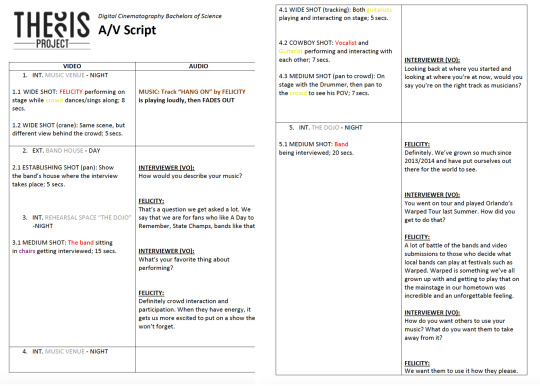
Lined Script
This month had the first actual “shooting day”. It was the interview portion of the video. I had to create lighting diagrams, storyboards (minimum of 30 with a minimum amount of certain shot types), and interview questions. Besides getting establishing shots, this was the only time I really had to plan word for word, visual for visual because it was something I had control over. I had no control of the shows, their lighting, their venue, etcetera. That is probably what I’ve learned that I love most. Although it can be a major pain during post-production, you’re forced to go with what you have and make best of what is presented to you while shooting a concert. Every show is different so it’s always exciting and a challenge which I really enjoy!
The next few months were pretty smooth. I kept shooting their shows and stock piling footage. June is when I was probably the most stressed I’ve ever been while creating this project. First off, this was the first of two classes I had that was strictly about my project (in other words, I learned everything I needed to and it was time to focus on the project only). This month was nothing but paperwork. When I say paperwork I mean more than 100 sheets of paper, easy. I had to do location scoutings/maps, location permits and releases, talent releases, crew member deals, liability contracts (for myself and the school), safety plans, copyright documents for any audio and footage that was being used, casting calls, call sheets, scene breakdowns, shot breakdowns, budgeting sheets, and shooting schedules. I know you probably got lost about halfway into that sentence. Yeah, it was incredibly difficult and stressful simply because of the amount of time I had to do it (3 weeks) and how many people I had to get in contact with. Oh and not to mention, if you didn’t have all necessary contracts, you had to retake the classes the following month. I’m pretty sure I cried about three times during that month out of frustration, worry, and sleep deprivation.

Shot Breakdown Sheet
During July things kept rolling, but the paperwork portion was finished! This was the production month of the project. So it consisted of more shooting and submitting 3-4 minute videos, aka dailies, of footage each week that was going to be used in the final edit. I was pretty nervous about this month mainly because this was the month right before the guy’s began their tour so I didn’t have any recent footage to submit. From what I submitted, my teacher for that month didn’t think I had enough content to move on. I passed that class by the skin of my teeth.
Now, August- my favorite month by far! This month was all about the post-production stage. After getting home from work, I spent an average of 8 hours a day in front of my computer editing in Adobe Premiere. Those 8 hours quickly rolled into the early mornings till about 3am. My sleep schedule was terrible and barely even there, really. For this Post-Production class, I had to submit an edit each week. The first week an assembly edit was due. An assembly edit is the roughest kind of edit one can do. No music, no fancy editing or transitions. You literally place the clips in the order you think you want them in and you’re done. It looks awful. I got a 100 on it. The second week the rough edit was due. This edit is where you added in the music, trimmed the clips to your liking, and added the transitions in. The third edit was the final edit. All color grading and correction needed to be done and the title/introduction of the video needed to be added. Any effects you wanted to add were required as well. Finally, the fine cut was due aka, mother of all edits. Up to this point, everything visually should have been fixed and polished. This edit was where you focused on the audio levels between all dialogue and music. You focused on the audio effects and overall balance of the mix which needed to average around -6dB. I got a 100 on the last edit, too!
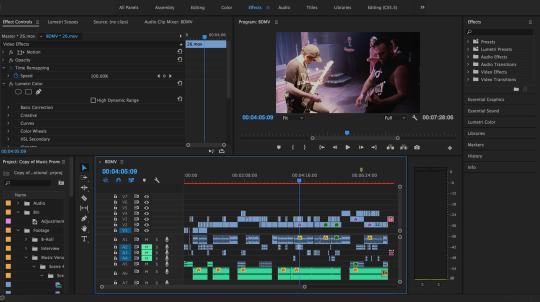
Fine Cut Edit
I received my grade and tears came to my eyes. This project has been my baby for the past year and the fact that it’s all finished is very bittersweet. With that being said, I still had to show the guys. A year of shooting and I never showed any of the guys of FELICITY any part of any edits. I wanted it to be a surprised and to be the best it could be! So I went over to the band house during rehearsal and we all watched it together. It was such a great moment. I was smiling the whole time with butterflies in my stomach, slightly nervous because I didn’t know what they would say. Thankfully, they loved it and wanted to watch it over again!
I’ve already had my sappy moment with the guys, but I will never be able to repay them or thank them enough. They did this to me as a favor. I had nothing to give them except a finished product. I was a stranger to them and they let me in with open arms. Without a doubt, they are five of the sweetest, respectful, funniest, easy-going, most talented guys I’ve ever met. I’ve gained a friendship with each of them and will forever cherish this project and them for helping me get started on the path of my career. This past year has been one of the best. I’ve made some great memories, experienced so much, met and worked with awesome people, learned a lot about myself as a videographer and photographer, and have become confident in my work. I’m doing exactly what I’ve wanted to do, exactly what I’m passionate about and it all started with them.
With that being said, they’ve decided they still want me around! I’m going to continue working with them for the rest of this tour and beyond (...or at least until they get tired of me). I am still working at my internship and plan to stay in Orlando once I graduate on September 29th. And if things keep going how they are, I’ll have a big announcement to make soon!
Again, this is such a bittersweet time in my life and I’ve loved every minute of it. Thank you to my mom and sisters for the continuous support and for watching every edit of this project even when the slightest of changes were made. Thank you to my friends who have understood my passion for what I do and have stuck around even when I can’t see them as often as I’d like to. And thank you to Andrew, Damien, Mike, Tyler, and Cory for trusting me to portray your music and brand to your fans and for just being you. I am grateful for you all.
-R
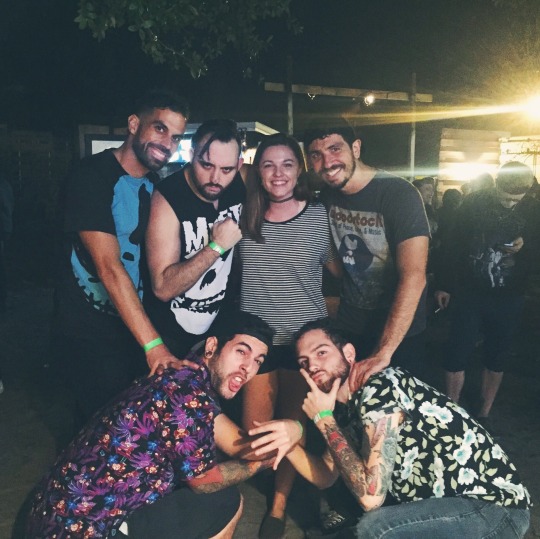




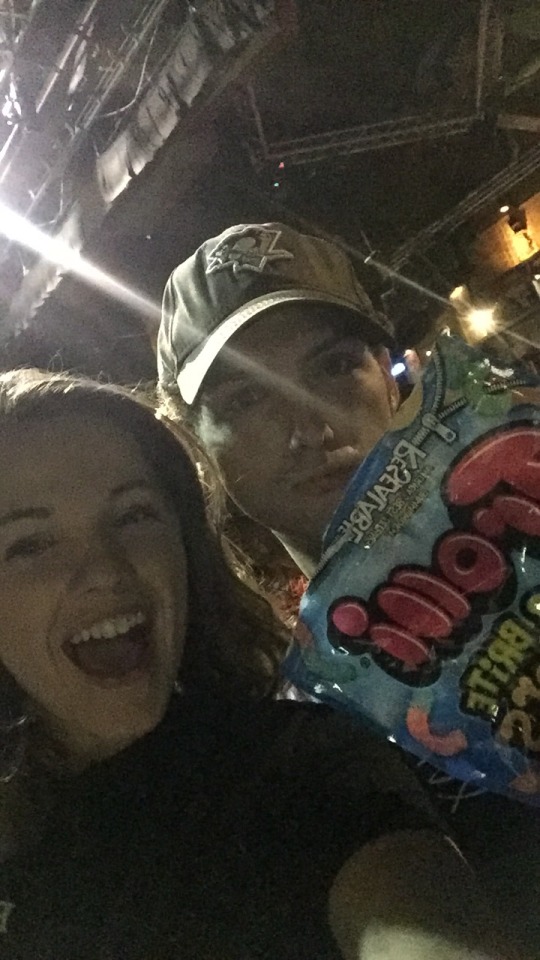
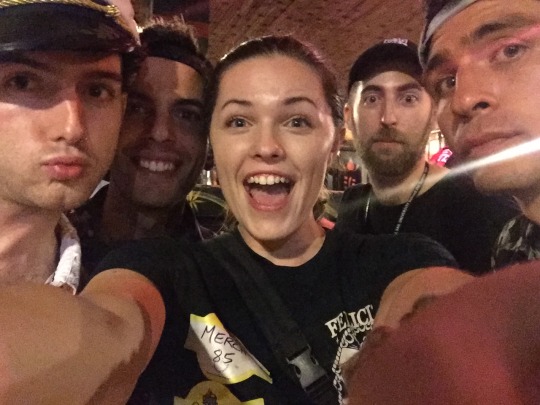
#rileejacksonvisuals#pop punk#felicity#we are felicity#orlando fl#orlando videographer#videography#music photography videography#editing#project#local music#local band#music promotional#music promo#concert videographer#concert videography
0 notes
Photo
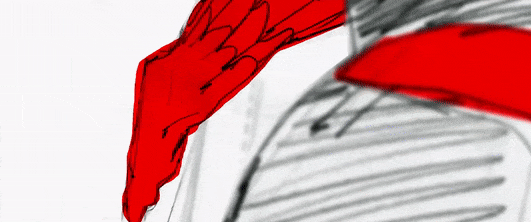
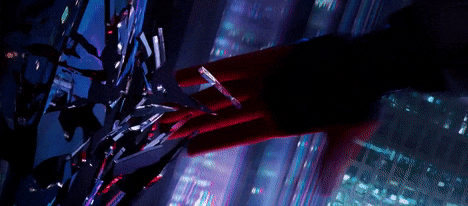
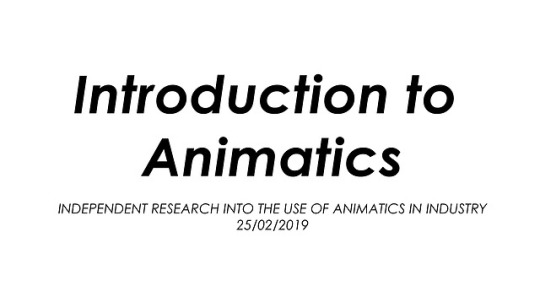

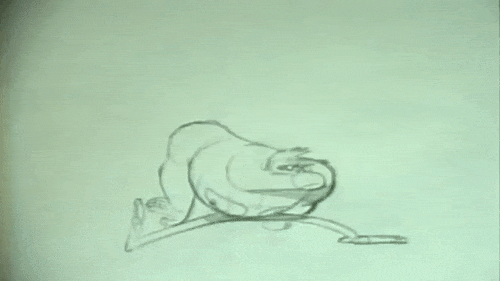
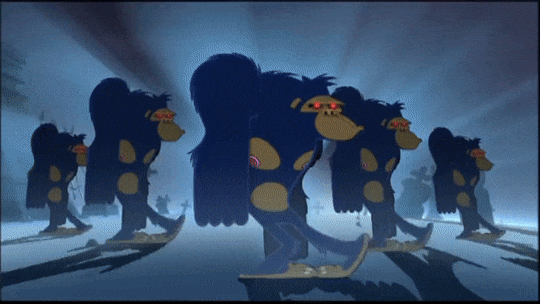

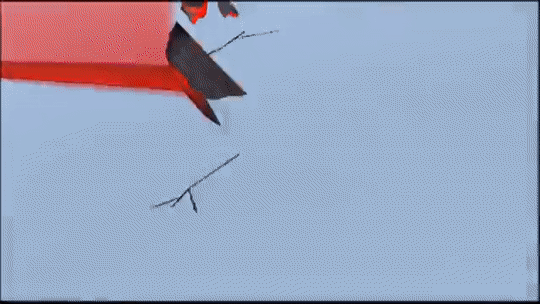
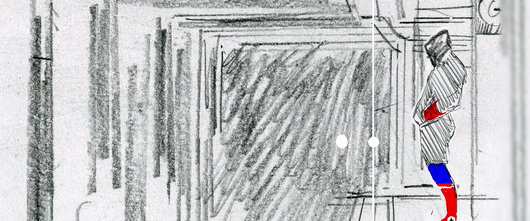

Mystery Box: An Introduction to Animatics
In this week’s animatic masterclass, we were introduced to the idea of an animatic as a way to plan our animations. Whilst we had the opportunity to create our own animatic, I first wanted to delve into the use of animatics in the industry of animation, looking at a few examples and the purpose they serve in the production of an animated sequence. This isn’t in response to any points from Helen herself, who simply gave us the task and how to produce it in the given software, but instead, this post is an opportunity for me to develop my own independent research into the use of animatics in animation.
What is an Animatic?
Last week, we explored the idea of storyboards, and how these hand-drawn frames can show the stages of a scene in rough camera placements. Here, issues with the story can be fixed easily, and allow the director/s to tell if the story is clear and works as a visual narrative. However, storyboards cannot tell us the timing or pacing of the sequence. To do that, editors and artists take the storyboard panels and translate them into an animatic.
In its most basic form, an animatic is a collection of static storyboards edited together into a sequence. Using an editing package, we are able to put the storyboards into a timeline and see how the timing works for the animation, even adding cuts and camera movements which are often timed to any dialogue or music that will be used in the final product.
Similar to storyboards, animatics are used to bridge the gap between an idea and a finished animation. We need to see how it might feel, and ‘get more of a grasp’ of the scene. In contrast to storyboards, animatics are very particular to animation. They are a way to layout the timing, pacing and the visuals of the entire thing without having to create it in animation. Animatics are used to get the flow of camera work, pacing and characters interactions. Typically, the sketches in animatics are rough and instead focus on timing and pacing, rather than appealing illustrations.
Industry Practices
In an illuminating video revealing the entire CG animation pipeline at Dreamworks Studios, lead editor Nick Fletcher explains the process in a way better than I ever could, simply because it’s his job to create animatics for Dreamworks’ feature films.
‘We take the storyboard panels and build a sequence out of those. Some times, we don’t have any dialogue, so we record ourselves doing the voices. We add a little music, sound effects and whatever is needed to fully tell the story. Try to make it as polished as possible so that the storyboard reel [or animatic] becomes a sort of foundation for the movie.’
Nick Fletcher, Editor and Animatic Creator for Dreamworks
In this early stage, the actors haven’t yet recorded their performances, so the editors effectively produce a rough pass as a way to present a preliminary vision of the film to directors, producers and executives, who will then green light the project to the next stage if they like what they see.
Interestingly, the inclusion of sound is a characteristic of almost every animatic I’ve come across, whether it be for a feature film animation or fan-made short on Youtube. Sound is a key part of producing an exciting and engaging animated film, and it’s not something that I want to disregard for this project either. When filming my own reference, I had the opportunity to verbally act out the performance and as such, I’ve essentially already got a rough audio track for my animatic, if I choose to include it. Despite the fact that sound isn’t mentioned in the brief, I feel like it could only be a good idea to include this aspect as a way to again push the limitations of this assignment and produce a piece of work that is of an industry standard: this is something that I want to consider when creating my own animatic.
With animatics, the drawings are often loose and sketchy: the focus is on telling the story and simply working out the timing and pacing of the sequence. A common industry practice of both storyboards and animatics is the use of spot colours or shading to simply separate the background and foreground, rendering the main characters in a shade of grey different to the background and foreground elements to direct the eye to the most important information and focal points of the shot. In my own animatic, I plan to produce a sketched version using simple line work and develop upon this by adding a grey tonal value to each of the elements as a way to evidence an understanding of key industry practices.
One final aspect to consider when creating an animatic is the program itself. After doing a little bit of digging online, I’ve found that the industry standard for animatic production is a combination of Adobe Photoshop to draw the frames and to sequence them using After Effects or Premiere Pro, both of which allow us to add cinematic touches and camera movements in this early stage. Already, I’ve had the opportunity to explore the use of virtual cameras within After Effects, and I can see the potential for more complex shot types and camera movements to be created simply using this technique of changing 2D illustrations into 3D flat objects that a virtual camera can then move around to give the illusion of depth.
Into the Spider-Verse: A Cinematic Approach
This idea of a cinematic approach to animatics, making use of more complex shots even at this early stage in production, can be seen in Alberto Mielgo’s initial animatics for the massively successful Spider-Man: Into the Spider-Verse. Mielgo created the tests using the Adobe Creative Cloud suite, drawing with pencil and digitally in Photoshop, and compositing the sketches in After Effects before doing any final editing in Premiere.
The shots are intensely cinematic, presenting a new vision of a hand-drawn, 3D world. This example represents a more complex approach to an animatic, as Mielgo presents an inherently cinematic, hand-drawn 3D world. Through panning virtual cameras and zooms through converted 2D illustrations, the audience is able to get a sense of the scale of the film and the city of Brooklyn. Looking at these animatics, there’s a clear understanding of editing and cinematography here, with a mix of blurred lenses, fades and cuts that outline the overall look and feel of the final film.
Here, Mielgo was creating key moments and shot compositions that the final film still adheres to, with his initial animatics playing a key role in establishing the film’s stylistic visual language and a new, snappy approach to animation. The idea to use comic book panels, illustrated onomatopoeia and an experimental approach to composition was the work of Mielgo’s early development in the project, and within these, we can see how an animatic can be used to plan out the action not only in terms of layout and timing, but also the visual language of the film and even more editing elements such as how to cut a shot.
Gorilliaz: Animatics in Music Videos
Animatics can also be found outside of the realm of animated feature films, however. For example, we can take a look at an animatic from the legendary animated band Gorillaz, an experiment blending animation and a genre-bending array of musical tastes that has become a world-wide hit since they first dropped their debut single in 2001, with ‘Clint Eastwood’. The song and music video are one and the same, each working to build off the other, and exemplifies the band’s use of mixing musical styles: combining hip hop, electronic and dubstep influences to defy musical genre, and instead embrace storytelling.
In the animatic for ‘Clint Eastwood’, we can see how the creators were able to pre-visualise their sequence by moving the camera around the 2D illustrations, which instantly gives the flat designs a sense of depth and cinematic charm. The slow arcing motion of each of the band members is shown clearly in the animatic, a shot that is now iconic to the band itself. It’s important to note that for the more complex moves, still images of the characters are used to act as visual place holders for the animation. With this example, the focus is on getting that smooth arcing camera movement, and focusing on each singular band member, and as such are represented with still frames. This is a common industry practice, and as such, animatics typically have little actual animation. Rather than a series of frames to create the illusion of movement, an animatic presents the action across a series of storyboarded panels that convey the motion through rough drawings.
Something interesting to note about this particular animatic is the varied use of mediums that creates a very tactical effect that hammers home to the audience that these sequences are created by hand. In a music video, one important element is the use of lip-synching early on - and as such, the animatic presents a nearly fully-animated lip-sync, animated traditionally on paper. This allows the animators a more considered and polished visualisation of the sequence to work from, and since it is a focal point of the video, it seems natural to want to develop upon this early on in the project.
Looking at the animatic, we can see how the creators have used a mix of near-fully animated sequences and moving still images to convey the story of the video. With more complex shots including detailed landscapes and multiple characters, only a handful of frames are shown - but it’s enough for the directors and creators to work from. In these more dynamic compositions, the characters are rendered with simple stick-figure bodies, taking the focus away from staying on model and more on sketching the shot and timing correct.
Additionally, the animatic also uses a range of camera effects to give the illusion of depth to these 2D characters, using a shaky cam to demonstrate a character jumping and slamming down onto the ground or arcing pan-up movements that evoke a real sense of cinematic composition and camera work - going beyond the traditional animation approach. It was quite interesting to see how the editors would recycle animations and shots for the video, allowing creators to save time using cycle animations for certain shots. Comparing these animatics to the final shots demonstrates how crucial and helpful the animatic is to a project like this: despite the colours, final polish and smooth animation, the sequence has effectively stayed to the initial compositions and camera movements outlined in the animatic.
Summary
In this post, I’ve been able to explore the use of animatics in the animation industry, taking the time to delve into some examples that I personally find inspiring and exciting, and how these ultimately outline the final feature. As an animator, creating an animatic is interestingly something that I’ve never actually done before. However, I can really see a benefit and the purpose of doing so - and with this, my next move is to take the ideas that I’ve found here and apply them in my own creative practice: developing my own animatic based on my final storyboard.
References
Into the Spider-Verse Storyboards. (2019). Alberto Mielgo. https://vimeo.com/311716775.
Clint Eastwood (Animatic). (2010). Gorillaz.
https://www.youtube.com/watch?v=JPC0n_ml4kc
Clint Eastwood. (2001). Gorillaz.
https://www.youtube.com/watch?v=1V_xRb0x9aw
What is an Animatic? (2014). Pluralsight Creative. https://www.youtube.com/watch?v=3sE5ox9kkUg
CGI Dreamworks Animation Studio Pipeline. (2016). CGMeetup.
https://www.youtube.com/watch?v=ru0tQRJ4qKs&t=249s
0 notes
Text
Task 4 Evaluation
An introduction explaining what the task that you were given to complete and what the constraints of the brief were (at least 200 words).
The task we were given consisted of working in small groups to create our own music video for an artist of our choosing (for a no copyrighted song). Before begin making it we are required to research examples from established artists that use a range of audio and visual techniques to make the most of an entertaining video that fits the category of music. The video should range from the use of dietetic and non dietetic sound, studio-based shoots to on-location filming as well as creative techniques.
The main factors to creating the video are: A clear style of music video (e.g. based, experimental, etc). The use of creative techniques (e.g. cutting to the beat & title design). A range of camera angles and movement (e.g. high angle, establishing shot, mid-shot, close-up, panning, tilting, zooming). The use of lighting to create a mood for the video (e.g. high and low-key lighting).
For part A of the task we needed to do research into our music video. A contests page would be needed to describe what the presentation will be about and what it will discuss. An overview of the artist and the song which has been chosen to study. A paragraph would be needed that describes how they video can provide inspiration for the creation of my own music video. We needed to discuss what locations are used in our chosen songs, how camera work is used, what visual effects are used to enhance the video, how colour and lighting is used to convey meaning in the video and how 'mise-en-scene' is used to convey meaning in the video.
Further along we needed to create an EPK of our chosen artist to advertise them and give information on them all in one page. A biography about the band / artist including who they are, where they are from, their style of music, album links etc. Photos of thee band and artwork from their albums. A storyboard that provides a visual representation of what will happen in your music video and what it is about. All relevant pre-production documents completed to a professional standard (e.g. kit request forms, kit list, risk assessment, call sheets, etc.
Task 3 was to provide a list of camera role: director, sound recordist, editor, lighting, etc. Research into diegetic and non-diegetic sound and a description of how it was used, research into specific audio and visual effects and a description of how they were used in the video. A production documentation of some planning that went into the video such as timed scripts, shot lists, studio floor plans or risk assessments, the final video would needed to be ready to be exported, viewed and uploaded to the server after it was complete.
A description of how you met the brief's requirements and what you felt went well with your project & Feedback (at least 200 words).
My team met the brief by using a range of creative techniques (such as cutting to the beat) the editing matched the pace and style of the music video. We included an opening scene which included the title of the music video name and displayed the artists name onscreen. Furthermore we enhanced the video with text that matched the words on screen as the lyrics were being sang. The words 'don't you know?' were used to ask the audience a hidden meaning of some kind by asking them a rhetorical question, that they can't really reply to but it makes them think. Since the viewer doesn't really know what the storyline could be. The video was made in a way that the viewer could interpret it in any way they choose.
The video was obviously very clear in the way it was made that it was a break up of some kind between a couple. But we used a lot of different shots to show that there could have been more to it. For example the shot where they were both looking over into the river, could they be thinking about giving up on life, or we also tried to use a lot of fading affects to make it seem like one of them could be a dead ghost. Someone mentioned that it was a great use of further research taking inspiration off another You Tuber (further research gone into the video to show off the same visuals and editing as they used). The video was inspired off 'Jesse Wellens' who used the same editing techniques as we did. His video he made was about a break up between his and his girlfriend of moments from the past in their relationship.
Another inspiration came from Tim Miller, we used the two of the same actor in different shots overlying each other so it looked like there were two of the same character being displayed at the same time. But the shot was no ordinary shot, it was moving which would have been difficult to take the shot due because it would be impossible to keep the same angle with a free hand camera. The shot was taken on a tripod, but an editing pack was used to make the camera shake slightly up and down from side to side, which the editor from Dead Pool has also used.
People said the editing was good. Someone in the audience mentioned they enjoyed the close up shots of the river and the characters eyes.
'Positives -> the words don’t you know (title, and words used in the song) goes with the idea of different meanings that the characters don’t know what to do or what it is happening and reflects the mysterious characters.'
'Feedback -> The point of the video? (Is it narrative based etc...?) It’s a narrative based video which focuses on a breakup story. I think the story is open for the viewer so they can interpret it in their own way. This makes the viewer use their imagination throughout the music video. Overall did a very good job.'
WWW-> Extremely good editing skills, lots of clear shots were featured throughout the video, had a clear plot (story).
A description of what obstacles were in the way of making the music video and what you felt could I could have done better & Feedback (at least 200 words).
The main worry I initially had when I first saw the finished video was the amount of repetition it had to it. Having few shots can lead to creating a boring music video later on if they are used more than once. Next time we should use more different locations and shots to make the video more entertaining to watch. The reason for this was being able to only have one day of recording because we left the recording until last minute before the deadline. But another problem was the song we chose, that electronic song in particular was very repetitive and we had to match the repetitiveness of it, so it was very hard to avoid.
A lack of planning was put into the video before recording the video. The majority of ideas came from my myself and James on the day of recording. Nobody in the group was clear on what the video would actually consists of because we spent too much time deciding the song we were going to use and coming up with an idea for it as well as deciding the location, early on we didn't take advantage of the time we had. towards the end after deciding our final idea we spent a lot of time looking for actors which is another part of the project which we should have took action earlier.
At first I had the idea of creating a music video of a band because I knew someone we could contact that was interested, however the group decided it was too simple and there was an electronic artist from America who created music. We felt like we could help him get more recognition since he was a very underrated artist. Using this artist 'Neovaii' meant that we could be more creative with our ideas because electronic music isn't widely known for having music video styles. If you look on YouTube most of them focus on the music rather than visuals, they will just show a picture of their logo whilst the song is playing, which is something Neovaii also does.
After deciding the artist we had a song which lead us to the idea of using smoke machines and gas cans filled with water but we soon found out that this was too complicated to get permission to use this kind of equipment and it may lead us getting into trouble. We then had to get rid of our current idea and come up with a different song from the same artist since we were running out of time, we hadn't shot/edited anything at this point. The following week we went on a recce to Hollywell Dene. The area looked aesthetically pleasing visually but the area was slippery and it didn't leave much room for camera equipment. It wasn't a complete waste of time because we practiced some shots on the bridges across the rivers and came up with some other ideas. The group knew if we could find an area similar to hollywell Dene we would be ready to film. We knew that one of our main ideas was to focus on the editing, the idea of both characters fading away in the same locations and reappearing, so not being able to film in this location was not a huge deal for us because we knew we could save it.
After the next few days we went on another recce to Jesmond Dene which wasn't too far away from the college campus and it was similar to the location we needed, the location was safe and it was a public area so it's easily accessible and can be recorded and filmed without many troubles, however one part we did struggle with was tourists passing by, they were walking their dogs, taking photos, running, etc.
Finding actors was the next task in our project, we originally wanted actors from the acting department. We tried to get their attention by sticking up around 8 notices on notice boards around the college. In the letter we said we were looking for a male actor and actress however we only managed to get one actress to contact us so James in our group asked his friend if he could do it and he eventually said yes after asking several other of his friends who all said they couldn't/didn't want to or came up with excuses, which was another problem we faced during this objective.
We booked out camera equipment to use for Wednesday morning. Towards the end of the final week on the Wednesday we got the metro from Newcastle central station to Jesmond Dene with the actors. We managed to pull together and come up with a lot of ideas quickly without taking too much time, as well as using some of the ideas we thought of before. Around 20minutes was wasted during the filming of our video because it started to rain, but luckily for us it wasn't too heavy and it quickly cleared up.
So lack of time management played a key role in why we couldn't plan most of our shots and have time to film shots. All of the recording we done for the music video was filmed in the space of 4-5 hours. Close to our deadline date on the Friday James edited the video quickly within two days and after a few drafts of feedback the final production was ready to be uploaded and screened.
'Negatives -> The video was too repetitive with the lyrics using the same animations each time, the same angles and locations were also used too much throughout the video as well, a lot of the same shots were used. The video would have been more enjoyable having a variation of scenes, some parts looked like parts to fill time.'
'Improvement -> Shots were repeated and so was the lyrics (repetitive)'
'Next time -> Plan more shots before going to film'
A conclusion that summarises how the project went overall, including the equipment you used and what the new skills were that you gained during the process (e.g. camera techniques, VFX, editing etc, at least 300 words).
In conclusion I think the project could have went better in some areas. We had more problems than we should have due to time constraints, deciding a location and relying on actors. Something I would have preferred to do would be to take more control of the project earlier on so we didn't waste so much time, it would have been interesting to be involved in the edit/recording more as well however we at a loss of time towards the end of the project before the deadline and the group trusted James to get the editing done in time. Other factors we might have faced as well would be that the camera we used to record was James' as well as his SD card so it would have taken more effort to transfer the files. So we just avoided doing that, but I feel as if I done my best in contributing to roles in tasks which could have been filled, and done what I was asked to do, without creating unnecessary arguments or anything, etc. A lot of the shots that I came up with the ideas for and directed actually were some of the main ones which ended up getting used in the video, for example the one where they are both standing on a rock watching the river. I came up with the idea of having 2 of the same people in the same frame, which was inspired off another YouTube music video 'KSI Adam's apple' which I thought was a really effective editing technique.
My favourite part about working in the group was having the independence and confidence for ourselves as a small group to work out what we were going to do and put the idea into action, something I hadn't done before was working with another actress with previous acting experience. We had to record with actors we had just met all in one day under pressure on the 'fly' since we were reaching close to our deadline, it was defiantly an interesting experience.
The camera equipment we used consisted of: Canon EOS 70d Body (£519) This was the main camera we used for the whole production , Canon EF-S 18-135mm f/3.5-5.6 zoom Lense (£269) The lense was useful for providing a lot of close up shots on the eyes of the actors, Livec 650 Tripod, Monopod, this was particular useful for a lot of shots which involved movement with the camera, if we recorded movement with a freehand camera it would be very shaky and probably make the visuals look worse. Neewer DSLR cage - we used this for one of our freehand shots along the river which required a still camera shot but we didn't use a tripod since we were recording close to water.
0 notes